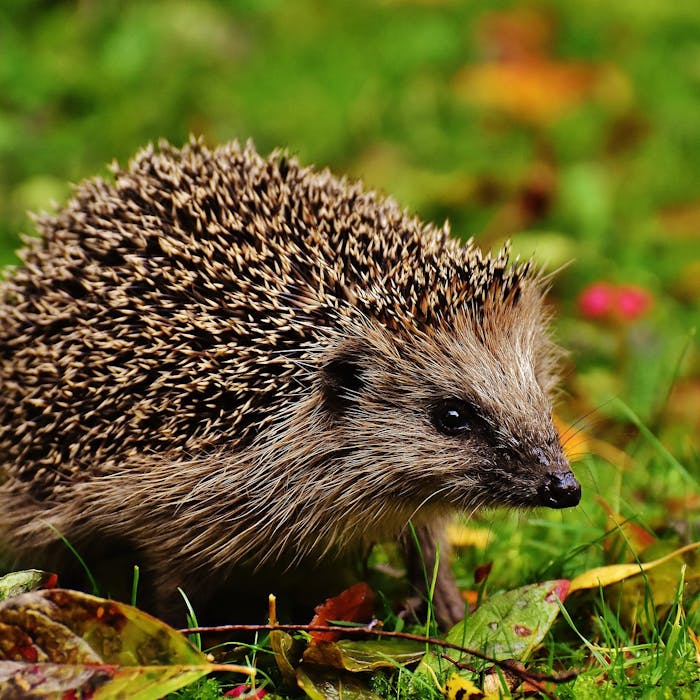
Our much-loved but disappearing hedgehogs
The hedgehog is one of Britain's favourite mammals, and was once a common sight in gardens and parks after dark. However, they are becoming increasingly rare, with the population thought to have declined significantly overall, and by a third in urban areas since 2000.
Hedgehogs are 20–25cm long and typically weigh up to 1.2kg. They have a distinctive waddling gait, a short tail and are covered in short, dark, yellow-tipped spines. They have long snouts and no spines on their underbellies, faces or limbs.
They can be found throughout mainland Britain. Alderney, one of the smaller Channel Islands, has a population of blond hedgehogs. Quite recently there were an estimated 1.5 million of the animals, but the latest figure is put at less than a million.
In the summer hedgehogs spend most of the day sheltering in a nest of leaves, moss and grass. They come out at night and can be heard snuffling and grunting as they forage for food. In the autumn they find a sheltered spot, often under a hedgerow, to hibernate.
Although their eyesight is poor, they have good hearing and a well-developed sense of smell. Hedgehogs are good runners, proficient climbers and can even swim.
If attacked they roll into a tight ball so only their spines are exposed. Many hedgehogs are killed unintentionally by humans: on the road, with lawnmowers, strimmers and garden chemicals, and in bonfires. They eat slugs, snails, beetles and earthworms, birds' eggs, nestlings and carrion.
The reason for the decline in hedgehog numbers is unknown. Theories include loss of habitat - including suitable hedges and gardens, poisoning from slug pellets, competition and predation by badgers, and the unintentional deaths caused by humans.
Further reading
Links to external websites are not maintained by Bite Sized Britain. They are provided to give users access to additional information. Bite Sized Britain is not responsible for the content of these external websites.
